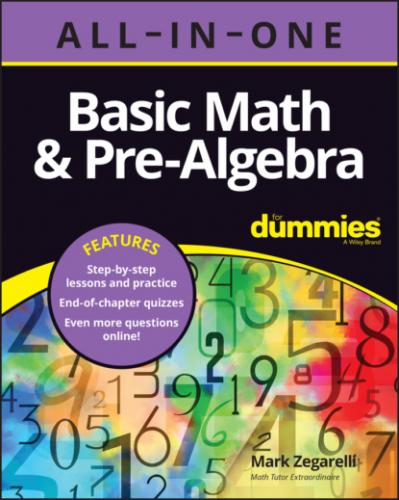A. 5. First, do the subtraction, which tells you
Q. What number does
A. 9. The number 9 is already positive, so the absolute value of 9 is also 9.
Q. What number does
A. 17. Because −17 is negative, the absolute value of
Q. Solve this absolute value problem:
A. −4. Do the subtraction first:
3
(a)
(b)
(c)
(d)
(e)
(f)
4 Solve the following absolute value problems:
(a)
(b)
(c)
(d)
(e)
(f)
Addition and Subtraction with Negative Numbers
The great secret to adding and subtracting negative numbers is to turn every problem into a series of ups and downs on the number line. When you know how to do this, you find that all these problems are quite simple.
So in this section, I explain how to add and subtract negative numbers on the number line. Don’t worry about memorizing every little bit of this procedure. Instead, just follow along so you get a sense of how negative numbers fit onto the number line. (If you need a quick refresher on how the number line works, see Chapter 1.)
Starting with a negative number
When you’re adding and subtracting on the number line, starting with a negative number isn’t much different from starting with a positive number. For example, suppose you want to calculate
Similarly, suppose you want to calculate
.
Adding a negative number
Suppose you want to calculate
By this rule,
